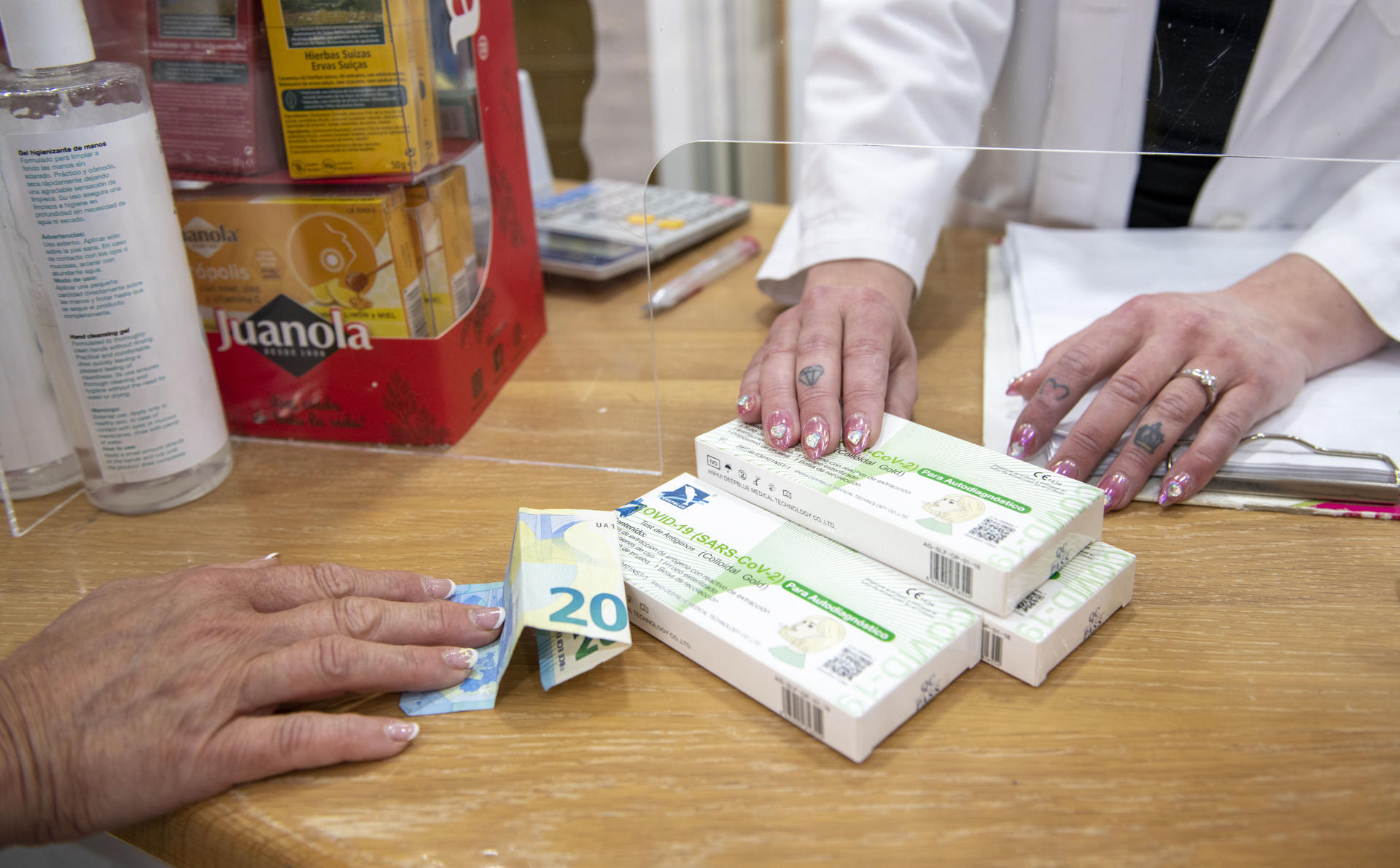Adaya Gonzalez |
Madrid (EFE) Mainly, but almost “nothing” in hospitals, even more so in UCIS.
According to the latest Sentinel Surveillance Report on Influenza, COVID-19 and other respiratory viruses in Primary Care (IRA) and Hospitals (SARI) for Influenza, COVID-19 and other Respiratory Viruses just released by the Carlos III Institute, the incidence of covid-19 increased during the week in primary care 13 percentage points, from 75 to 88 cases per 100,000 residents. In early July there were 29 cases.
Broken down by age group, the highest figures still occur among children under 5 years of age over 180.
Meanwhile, the hospitalization rate was 2.04 (from 0.75 in the previous report), but fluctuated at the end of June. As of August 6, the remaining respiratory infections analyzed in the report, namely influenza and respiratory syncytial virus (RSV), remained at baseline levels in both regions.
A “singing” turnaround will be followed by others who are equally “quiet”
Salvador Peiró, an expert in preventive medicine and public health in the field of health services research at the Health Promotion Foundation, emphasized to EFE that, unlike these two viruses, Sars-Cov-2 “never had a seasonal behavior”. Ba Rencia Community Health and Biomedical Research (Fisabio).
“We have outbreaks every summer,” the researchers said, and it is “predictable” that there are sometimes outbreaks, about every 5-6 months, when vaccines and natural immunity gain protection after infection. These types of upturns occur when the decline begins.
If all this is added to the summer’s typical increase in fluidity and social interaction, the first of the last four also completely strips off the mask “because the turnaround has been sung”.
But with each exposure, the immune system doesn’t start from scratch like it did at the beginning, because it already knows the virus, although it can mutate and produce new variants, so predictably, the spike will be, “generally , calm,” as is happening now.
The expert played down the fact that the highest incidence was among children because, in addition to having much lower vaccination coverage than adults, their disease is also very mild.
However, he noted that today’s figures are “difficult to interpret” because so few tests were performed and the tests performed were all self-diagnosed and not included in the official statistics, which only count tests performed by the health system for those aged 60. above people.
Facing Symptoms, Masks and Distance
Dr. Javier Arranz, member of the Infectious Diseases Working Group of the Spanish Society of Family and Community Medicine (semFYC), agrees: “At the moment, the coronavirus is not the same as the flu, which is when we are in winter, but it is linked to social behaviour. more relationships”.
Holidays, conferences, festivals, crowds… this is a period of heightened social ties, which is why Arrantz predicts that the number of cases will still increase “in a few weeks” and start to decline again “in a few weeks”.
In any case, the doctor stressed that “the severity of the infection appears to have remained low, but not stable, due to the highly fluctuating rates of hospitalization,” although he recalled that, as has always happened, the more cases, the higher the hospitalization rate. high. More admissions, so it is not ruled out that we will also see an increase in this indicator in the next few days.
In response, Perot said with confidence that the new economic upturn over the summer “hasn’t actually caused a problem: in primary care, they noticed something, in the hospital they noticed almost nothing, in the intensive care unit. , nothing.”
Although the number of infection cases around us is soaring, almost all the infection cases are mild, so there is no need to take special measures, “except for those who have symptoms, it is best to wear a mask and share with the elderly or vulnerable keep distance”.
Things change for them because their systems are weakened, but this happens with all respiratory infections, not just COVID-19; so the more the spread of the virus is contained, the more protected they are .
New Boost with Updated Vaccines
Vaccines don’t prevent contagion, but they are indeed “very effective” at preventing serious disease; for this reason, Fisabio researchers are advocating a new memory dose for vulnerable populations this fall.
The fact that it’s fall is just a matter of logistics to coincide with the flu, but not because the coronavirus is now expected to adopt seasonal behavior it hasn’t seen so far.
Given that the variants in circulation have changed – now the main variants in Spain are XXB (33%), and this season it is BQ.1 (32%) and XBB.1.5 (31%) – “wise” to do so is a new puncture using the latest vaccines made by Pfizer, Moderna and Novavax.
He insisted that others should be concerned about those at risk of severe coronavirus, against whom extreme precautions must be taken.
So once you have any respiratory symptoms, “whether it’s coronavirus, flu, syncytial virus, whatever it is, you have to take the basic education and hygiene measures: distance and masks, try not to get infected.” This must be forever , not because now we’ve bounced back,” Perot concluded.

